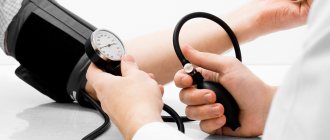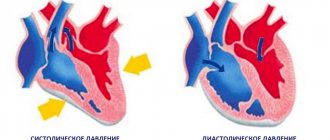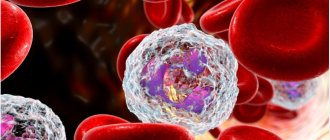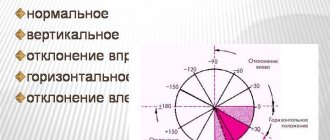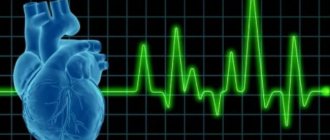25.11.2018
A.A.
(Last update: 01/23/2019)
There are contraindications. Specialist consultation required
Blood pressure is a parameter that indicates the strength of blood flow, which puts pressure on the vascular walls. Its parameters depend on the speed of the heart, the volume of blood that it passes through itself in one minute. Blood pressure is also affected by the condition of the adrenal glands, kidneys, and blood vessels. Normal blood pressure is 120/80 mm. rt. Art. If a person has a blood pressure of 100 to 40 mm. rt. Art., negative symptoms appear, health worsens.
Description of the problem
Pressure 100/40 mm. rt. Art. is considered low. If it is observed constantly, we are talking about hypotension, that is, reduced vascular tone. But it is not always possible to talk about this diagnosis. For example, such blood pressure is often observed in professional athletes and thin people.
Do not self-medicate. Consult a specialist:
But doctors say that a decrease in indicators can lead to the development of certain pathologies. Hypotonic people usually have low blood pressure from an early age. They have a harder time recovering from physical activity, experience weakness, and do not tolerate heat well.
There are two types of hypotension:
You get promotional code OZON - 300 points for your first order. OZONAPIE1I (applied in the cart)
- Physiological, which is accompanied by good health and preservation of human performance. Typically, such people have blood pressure readings within 100/60 mm. rt. Art. In this case, the human body receives oxygen in sufficient quantities, the metabolism in it proceeds normally.
- Pathological, which can occur as an independent disease or develop due to circulatory disorders and poisoning of the body due to infections, VSD, dehydration, sepsis, shock or collapse. The pathology is accompanied by impaired functionality of vital organs.
Is this blood pressure normal for pregnant women?
In women, a pressure of 100 over 70 during the period of bearing a child is perceived as quite normal, especially if at such indicators the pregnant woman feels well, and tests indicate the correct formation of the fetus. The female body is more changeable in terms of hormonal status and blood pressure due to the fact that its main functions are bearing children and childbirth.
Therefore, changes in hormonal levels affect the tonometer readings, especially since an additional circle of blood circulation appears in the body. An increased load is placed on the heart and blood vessels of the expectant mother, as a result of which pressure indicators also change. As the fetus develops in the womb and grows, the body tries to independently ensure relaxation of the uterus and prevent increased muscle tone and premature birth.
Therefore, the tonometer readings are recorded as underestimated, even if before pregnancy the normal blood pressure for a woman was 120/80 or 130/90. If the fetus is feeling well and is developing properly, there is no reason for concern in such a situation. The expectant mother should be wary if her blood pressure range is constantly fixed at 102-103 over 65 or 95 over 60.
Such symptoms of hypotension signal a threat of premature delivery or early miscarriage. If blood pressure drops to such limits and remains at this level, the child may have a heart attack in utero, oxygen starvation may begin, a blood clot may form in the placental tissue, or internal organs may not form properly.
If such symptoms occur, doctors try to monitor the pregnant woman in a hospital setting, where they can take emergency measures to stabilize the woman’s blood pressure and well-being. Moreover, with low blood pressure, she constantly has a headache, lethargy, drowsiness and tinnitus.
Do not think that blood pressure of 100/70 for a pregnant woman is a bad diagnosis. In the first trimester of pregnancy, such indicators are observed in most women, since during this period the hormone progesterone is intensively produced. It is necessary for the normal functioning of the uterus, full access to it of oxygen, vitamins and microelements. After a while, the pressure may return to normal levels and the woman’s condition will stabilize.
Causes of low upper pressure
Blood pressure readings are 100/40 mm. rt. Art. are a deviation from the norm, they can be observed in the following situations:
- An innate feature of the body, in particular the ANS. This phenomenon occurs in 7% of people worldwide. They continue to live an active life, but cannot tolerate an increase in blood pressure to normal levels.
- VSD of hypotonic type. In this case, there is a violation of the regulation system of the hypothalamus and nerves that extend to all organs. The pathology is manifested by a disorder of adaptation to the external environment.
- Taking certain medications. Such medications include painkillers, antispasmodics, high-dose antibiotics, heart medications, and high-dose sedatives.
- Stomach ulcer or acute pancreatitis. The blood pressure will return to normal when the disease is cured.
- Any bleeding and anemia.
- Exhaustion and depression. In this case, the adrenal glands begin to actively synthesize stress hormones: adrenaline and acetylcholine.
- Pathologies of the endocrine, nervous, cardiovascular systems.
- Lack of vitamins B, as well as C and D.
- Infectious diseases.
- Osteochondrosis.
- Heart failure, which can occur due to heart pathologies or as a complication of the flu.
- Sedentary lifestyle. A decrease in muscle tone leads to disruption of the heart and metabolism.
- Harmful working conditions. Low pressure readings are common among those who work in high humidity or underground.
- Pregnancy.
- Allergy.
If the pressure has dropped to 100/40 mm. rt. Art. only once, perhaps due to a change in weather conditions or a stressful situation. When indicators do not change for a long time. You need to consult a doctor to rule out the development of the initial stage of hypotension.
Why is it dangerous?
Hypotension can be accompanied by very unpleasant symptoms:
- noise or ringing in the ears;
- cardiopalmus;
- dizziness.
In such cases, it is necessary to consult a doctor and identify the cause of the decrease in pressure. After all, hypotension that appears may indicate the presence of serious diseases.
With low blood pressure, there is insufficient oxygen supply to the brain, which can trigger an ischemic stroke, which is especially true for the elderly. The cause of hearing and vision impairment in older people in most cases is physiological hypotension, characteristic of the sleeping person.
With low blood pressure, the degree of the patient’s existing cardiovascular diseases increases, the filling of the blood flow of the heart muscle suffers and cannot provide the blood flow necessary for proper nutrition of the heart muscle.
Pregnant women should especially carefully monitor their blood pressure. With hypotension, there is insufficient blood supply to the fetus, and the baby receives oxygen in smaller quantities. This can provoke the development of congenital pathologies and defects, and in the worst case, miscarriage or premature birth.
The cause of low blood pressure in children and adolescents is hormonal changes characteristic of a growing body. There is no need to worry too much about this, but you need to know that hypotension in this case can be a sign of a serious illness, such as a stomach ulcer, asthma or allergies.
In this case, you should consult a cardiologist, endocrinologist and neurologist, and also visit an ophthalmologist to diagnose the condition of the fundus.
Monitor your child's blood pressure by measuring it regularly at least three times a day. To prevent children's blood pressure from dropping during the day, they need to have a hearty breakfast. Particular attention should be paid to the diet: reduce the consumption of chocolate, sugar, sour cream, tomatoes, honey.
Physical education and hardening the young body trains the cardiovascular system and reduces the risk of hypotension.
Symptoms
Some people with blood pressure 100/40 mm. Hg Art. do not experience health problems and do not feel a deterioration in well-being. Others, on the contrary, may experience the following symptoms:
- Drowsiness, fatigue, lethargy;
- Darkening in the eyes;
- The appearance of flies before the eyes;
- Increased sensitivity to loud sounds and bright lights, as well as changes in air temperature;
- Shortness of breath, tachycardia;
- Decreased attention and memory;
- Coldness of the extremities;
- Decreased muscle tone;
- Indigestion;
- Dizziness, pain in the head;
- Decreased body temperature;
- Nausea;
- Impaired coordination of movements;
- Loss of consciousness;
- Numbness of hands and feet;
- Reduced heart rate to sixty beats per minute;
- Vegetative-vascular paroxysms (tremors, tissue swelling, joint pain, cardiac dysfunction).
Mild hypertension can be controlled and predicted. Based on the results of numerous studies, it was concluded that hypotension inhibits the development of atherosclerosis. The appearance of signs of the disease will depend on the age and health of the person, as well as the reasons for which it arose.
With hypotension, blood pressure is not always reduced; it can periodically reach normal. Most often this occurs during excitement or a feeling of fear. But blood pressure drops quickly.
Often with this pathology, blood pressure can drop below 100/40 mm. Hg Art. in this case we are talking about a hypotensive crisis. In this case, all of the above symptoms intensify, and the person may lose consciousness.
If you have unpleasant symptoms, you should consult a doctor to identify the disease that caused the decrease in blood pressure. This is especially true for people after forty years of age, since hypotension can turn into hypertension.
Pulse is an equally important indicator
If the tonometer readings fluctuate around 100/70, this is not yet a reason to take urgent measures - you need to take into account what the person’s normal working pressure is. Perhaps, due to the individual characteristics of the body, this level of blood pressure does not cause discomfort to a person.
Modern tonometers reflect pressure and pulse simultaneously
But heart pulsation must be taken seriously, since this indicator provides definitive information whether the patient needs therapeutic treatment. Also, the heart rate allows you to determine what kind of help to provide to yourself or a loved one if there is no doctor nearby and there is no opportunity to undergo an examination. So, which condition is considered normal and which is pathology:
Medicines to increase blood pressure in tablets
- Pressure 100 over 70, pulse 60-65-70-75 - these indicators are within the normal range, especially if the person does not experience any discomfort and does not show additional signs of hypotension. A rapid heartbeat can occur with anxiety, increased physical activity, or stress.
- Blood pressure 100 over 70, pulse 80-85-90-95 - this condition is sometimes also considered normal, but more often it indicates an attack of tachycardia. With a rapid heartbeat, the body tries to compensate for the insufficient supply of blood and oxygen to the heart muscle. The doctor can make an assumption about the onset of anemia and refer the patient to donate blood to determine hemoglobin levels.
- Blood pressure 100 over 70, pulse 100-110 - what does this mean? As a result of a decrease in blood pressure, which no longer fits within the normal range for a particular patient, heart problems arise. There is another explanation for this condition - it is a pinched nerve in the thoracic spine, which results in the development of symptoms similar to cardiac pathology.
If a person feels that an increase in pulse with low blood pressure to 100/70 (if previously such pressure was normal for him) affects his well-being, such symptoms should not be ignored. Any deviation from the norm should be a reason to visit a specialist, undergo an ECG and ultrasound.
Pressure 100/40 mm. Hg Art. and pregnancy
Such blood pressure readings are often observed in women who are pregnant. In such cases, the pathology begins to worsen, which leads to a drop in blood pressure.
Typically, deterioration of the condition is observed at the initial stage of pregnancy, when early toxicosis develops. In the second half of pregnancy, vena cava syndrome develops, which is accompanied by a decrease in pulse pressure, and fainting develops.
The danger of low blood pressure is that it can cause spontaneous abortion. Hypotension also contributes to delayed fetal development due to decreased placental blood flow and complications of labor as a result of impaired uterine contractions. Bleeding may develop.
Danger of disease
Physiological hypotension, according to doctors, is not dangerous. But over time, the disease can develop into hypertension.
Pathological hypotension indicates serious disorders in the body. It can cause heart attacks or strokes, which kill 70% of people worldwide. This is due to the fact that there is a blockage of blood vessels in the brain or heart.
The main danger to human health and life are diseases that provoke a drop in blood pressure. Thus, with vegetative-vascular dystonia, brain function is disrupted, and the body begins to deplete. In some cases the pressure is 100/40 mm. rt. Art. can lead to the development of shock, hypotensive crisis, thrombosis.
Fainting is also a danger. In this case, a person may fall, hit his head, get injured or break his limbs.
What to do with low scores?
Hypotension can act as a unique response of the body to constant stress, overwork, and lack of sleep. What to do if the pressure is 100/40 mm Hg. and difficult to correct? It is important to be able to be distracted and rest properly, without allowing the body to work for wear.
And also read on our website: What does blood pressure 130 over 90 mean, is this normal and is it necessary to lower these indicators?
If the problem of hypotension is based on weather dependence, when choosing a vacation spot it is better to avoid sudden climate changes.
If you lack vitamins, you should reconsider your diet.
Give preference to foods that increase blood pressure and improve the condition of blood vessels. Eat and drink:
- citrus;
- spinach, broccoli, cabbage, carrots, beets;
- decoctions of sea buckthorn, black currant, rose hips;
- fermented milk products and hard cheeses;
- peanuts, walnuts;
- offal, chicken, veal liver;
- whole grains, wheat and rice bran, lentils;
- seafood, especially sardines and salmon;
- beans, greens, dried fruits;
- strong black tea with sugar;
- dark chocolate.
At the same time, the gap between meals should not be long: it is better to eat more often and in small portions. Hunger can cause fainting.
In addition to proper nutrition, it is extremely important for hypotensive patients to get enough sleep and not overwork. The duration of night sleep should be at least 8 hours. You shouldn’t “jump up at the alarm clock”; it’s better to lie in bed for a few minutes after waking up. You can do gymnastics.
Walking is beneficial at any time of the year, especially in winter, when the air is saturated with oxygen. It is better to choose a park or forest as a place for walking.
Hardening is useful for training the cardiovascular system. It is worth starting with simple procedures to avoid vascular spasms.
Excessive loads will harm hypotension, but light, tonic, but not exhausting, on the contrary, will give strength and vigor. Do daily exercises, move more.
In the evening it will be useful to lie down with your legs elevated to improve blood circulation.
And also read on our website what to do if your blood pressure is: 100 over 50, 100 over 60, 100 over 70 and 100 over 100?
A massage will help you relax. You can even do self-massage, which will reduce nervous tension and improve performance.
Breathing exercises that increase blood pressure are helpful. You need to take a deep breath and sharply release the air through clenched teeth. For a good effect, repeat the exercise at least 5 times.
And also read on our website: Pressure and pulse in girls at 11 years old
Hypotonic people perform work better in the afternoon, so it is worth choosing a place of work that is busier in the afternoon.
Complications and consequences
If left untreated, low blood pressure can cause the following complications:
- Ischemic stroke;
- Impaired activity of the kidneys and adrenal glands;
- Acute myocardial infarction;
- Anemia;
- Cardiogenic or anaphylactic shock;
- Bleeding from the gastrointestinal tract;
- Hypoxia.
Doctors say that it is not the pressure itself that needs to be treated, but the diseases that provoke its decrease.
Therapy
The doctor will prescribe appropriate treatment after the examination. First of all, a person must get rid of bad habits, eliminate caffeine consumption, and avoid stressful situations.
When blood pressure drops, doctors often prescribe drugs such as Pantocrin, Citramon, and Capoten. Doctors often use oxygen therapy to improve blood circulation, increase blood pressure, as well as the force of contraction of the heart muscle and dilation of blood vessels. Headaches are treated with painkillers.
Typically, the treatment regimen for pathology includes taking the following medications:
- Mineralocorticoids: Fludrocortisone, which increases blood volume and blood pressure;
- Sympathomimetics: “Etilephrine”, which helps stabilize blood circulation;
- Derivatives of ergotamine, alkaloids cut to reduce the lumen of large veins;
- Beta blockers used in moderate therapeutic doses;
- Alpha adrenergic agonists with a vasoconstrictor effect;
- Vitamins of group B, as well as C and E.
The choice of medications will depend on the causes of low blood pressure, the person’s health status, his age and other factors.
In severe cases, therapy is carried out in a hospital setting.
Prevention
To prevent negative consequences from occurring, a person with hypotension must take preventive measures. To do this, it is recommended to normalize your diet, sleep and wakefulness, lead a correct and healthy lifestyle, get rid of bad habits, perform moderate strength exercises and spend more time in the fresh air. It is also necessary to promptly treat various pathologies of the nervous, cardiovascular and endocrine systems.
When the first signs of a drop in pressure appear, you should consult a doctor for examination.
How to help hypotension
What should you do if your blood pressure suddenly drops to 100/70, but such tonometer readings are not typical for a person? First of all, measure your pulse and, if necessary (if it increases to 85-100), consult a doctor. You can do the following yourself:
- open the windows in the room to ensure the flow of oxygen - this will help overcome drowsiness and eliminate headaches (in stuffy rooms, pressure can drop even in a healthy person);
- drink a cup of tea or coffee - the drinks contain caffeine, which will raise the pressure by 5-10 units, and the person will immediately feel better (it is better if the tea or coffee is with sugar);
- lie in a horizontal position and raise your legs to a level above your head - lie there for 15-20 minutes to ensure blood flow to the heart and brain;
- take a Citramon tablet – it contains caffeine, which increases blood pressure in hypotensive patients;
- calm down if the drop in blood pressure is caused by stress or conflict.
There are few special medications to increase blood pressure, and they are prescribed only by a specialist after examination and clarification of the causes of hypotension. You should not take the pills yourself.
You can reconsider your lifestyle - adjust your daily routine, rest more, sleep at least 7 hours a day, walk in the fresh air more often. Regular cardio exercise is also useful so that the heart muscle is trained and the organs do not experience oxygen deficiency. Such measures will help keep your blood pressure under control and prevent it from falling below the required limits.
If with a blood pressure of 100/70 a person feels well, does not experience discomfort, weakness or dizziness, and the pulse is normal, there is no reason to worry. This means that a slight decrease in tonometer readings is due to the individual characteristics of the body. But visiting a doctor for a preventive examination will not be superfluous, because it is better to keep the work of the heart and blood vessels under control than to then treat long-term and persistent diseases for a long time.

